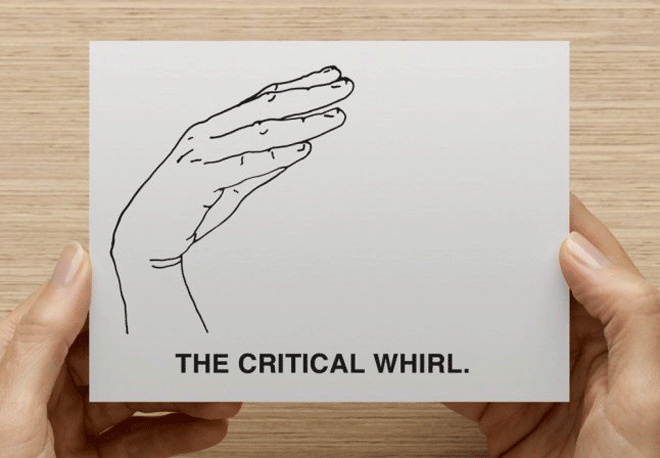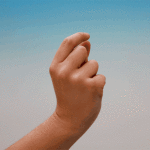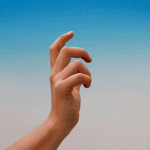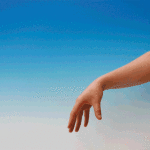You’ve definitely seen it at some point. Maybe it was in a lecture in college. Maybe it was in a TED talk you watched recently. Someone is trying to explain some important historical connection, drawing up a grand theory of art or science or human progress, and there it is, as if by reflex: the hand lifts in front of them like an upturned claw, the fingers slowly turning an invisible dial. That’s “The Dialectic,” one of the hand gestures you’ll need to master to become a genuine thought leader.
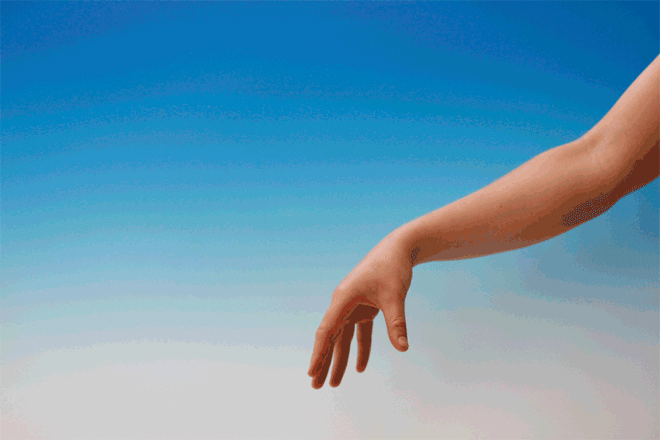
Alice May Williams and Jasmine Johnson observed “the full complement” of these gestures in the process of earning their MFA at Goldsmiths College in London. In an effort to bring them out of the rarified world of academia and into the lives of ordinary people, the duo created a handy instructional website: The Glossary of Gestures for Critical Discussion.
Throughout their courses, Williams and Johnson saw the gestures repeated so frequently that “it became hard not to notice them spreading from academics to students and back again,” they explain–a sort of vicious cycle of performative thinking. The more they looked, the more they saw. Elaborate, double-handed gestures were typically reserved for the leading academics that visited as part of the program’s lecture series. “The Dialectic” proved to be especially popular with all ranks of thinkers. It’s “an unconscious twitch that says ‘take me seriously,’” say Williams and Johnson.
Their virtual manual includes nine gestures in all. To perform “The Critical Whirl,” simply circle your hand counterclockwise in a small but rapid motion towards the audience. “Accelerate and repeat until idea unpacked,” the website tells us. It’s one of the more basic maneuvers, suitable for both formal academic settings and conversations about the means of production over a glass of wine.
On the more advanced end, you have something like “The Shelf Sweep,” a two handed maneuver that involves pushing aside the contents of an imaginary bookcase and then quickly sweeping aside the contents of the shelf below it in an opposite direction. “Use when explaining hierarchies,” the manual reads.
After a measure of viral success, Williams and Johnson brought their materials into the real world. The gestures have been immortalized in a poster series for Public Assembly and now exist as a range of handy goods, including tea towels, coasters, mugs, and, most impressively, an animated lenticular ruler. A few can be had here. You’ll wonder how you ever thought without them.

